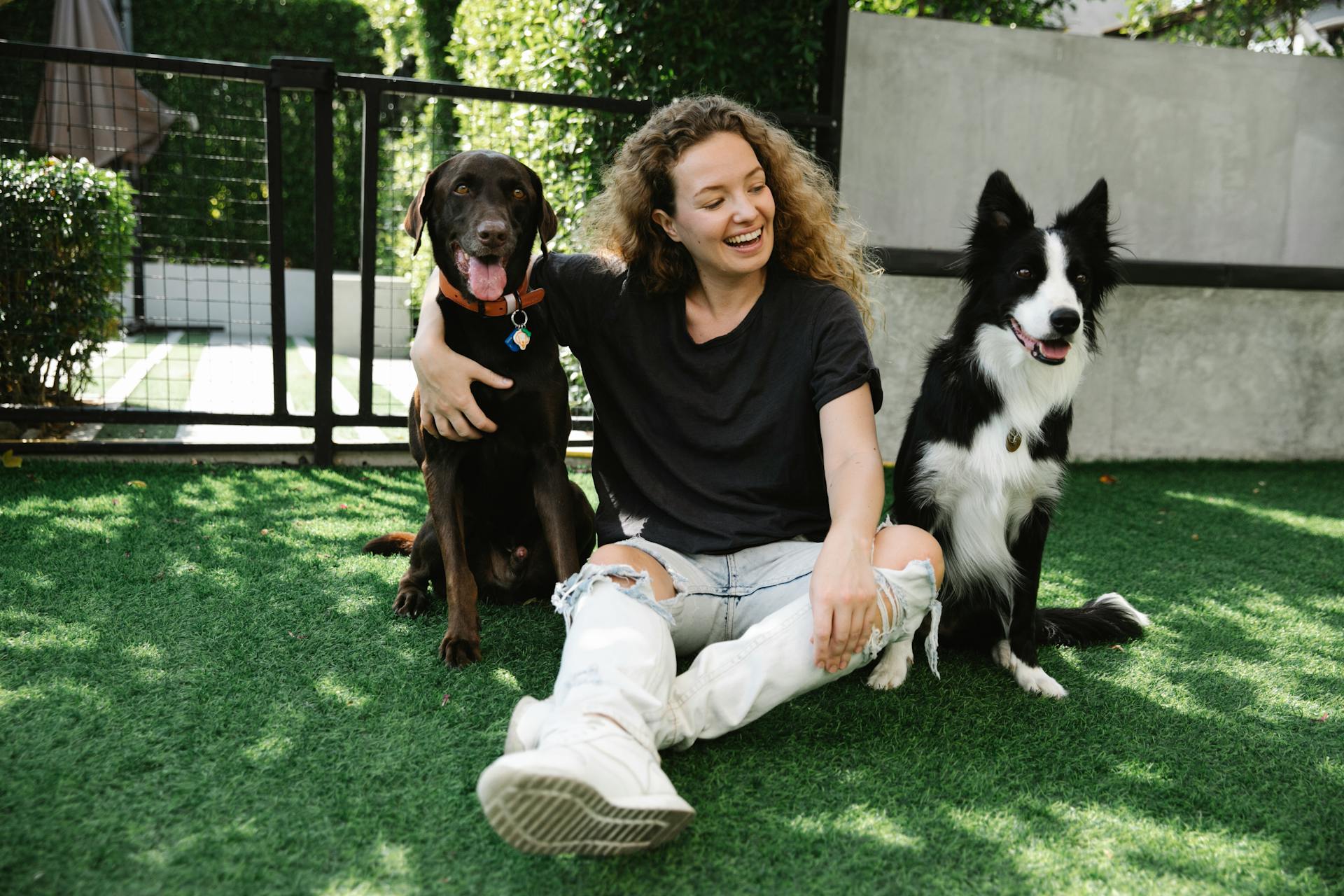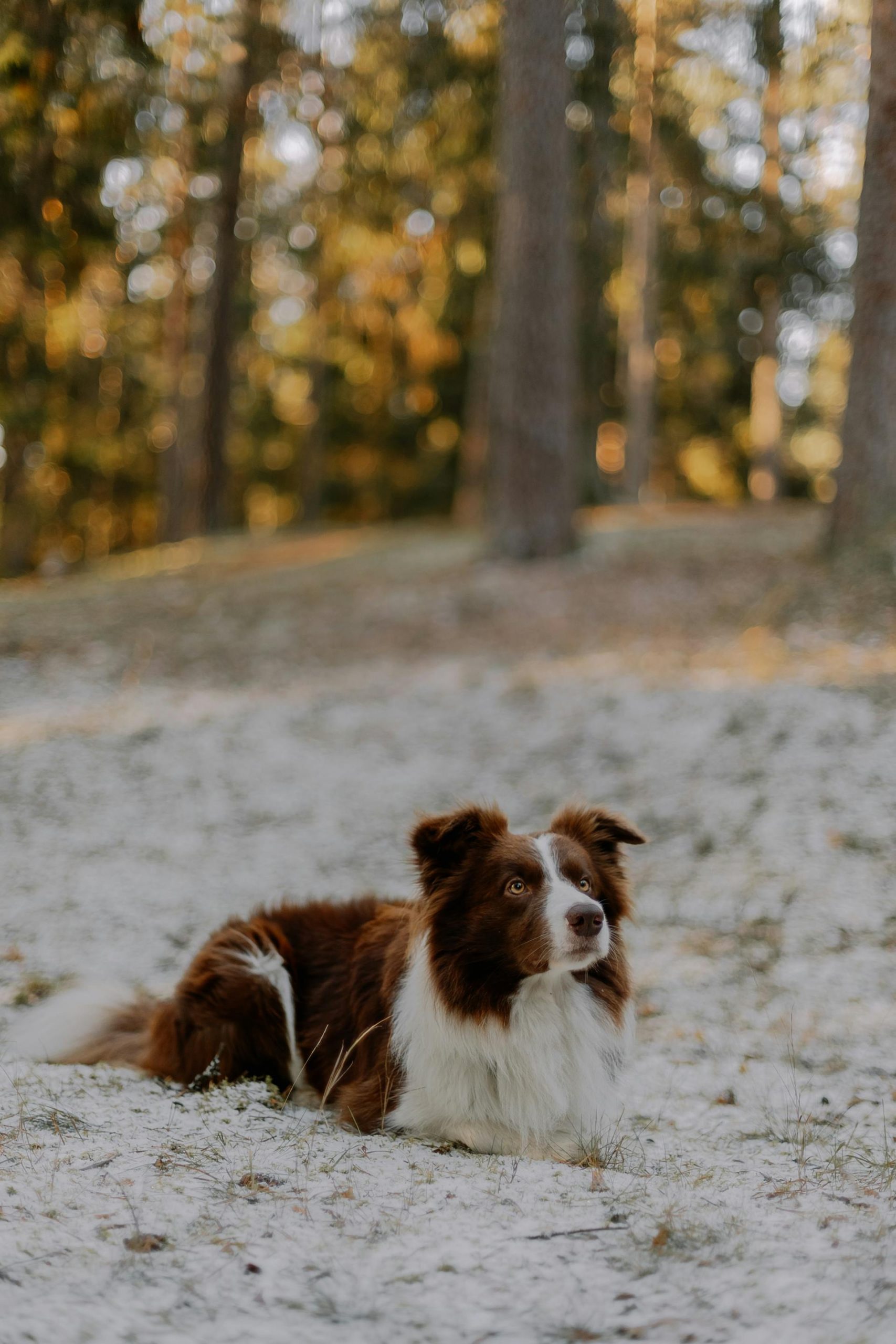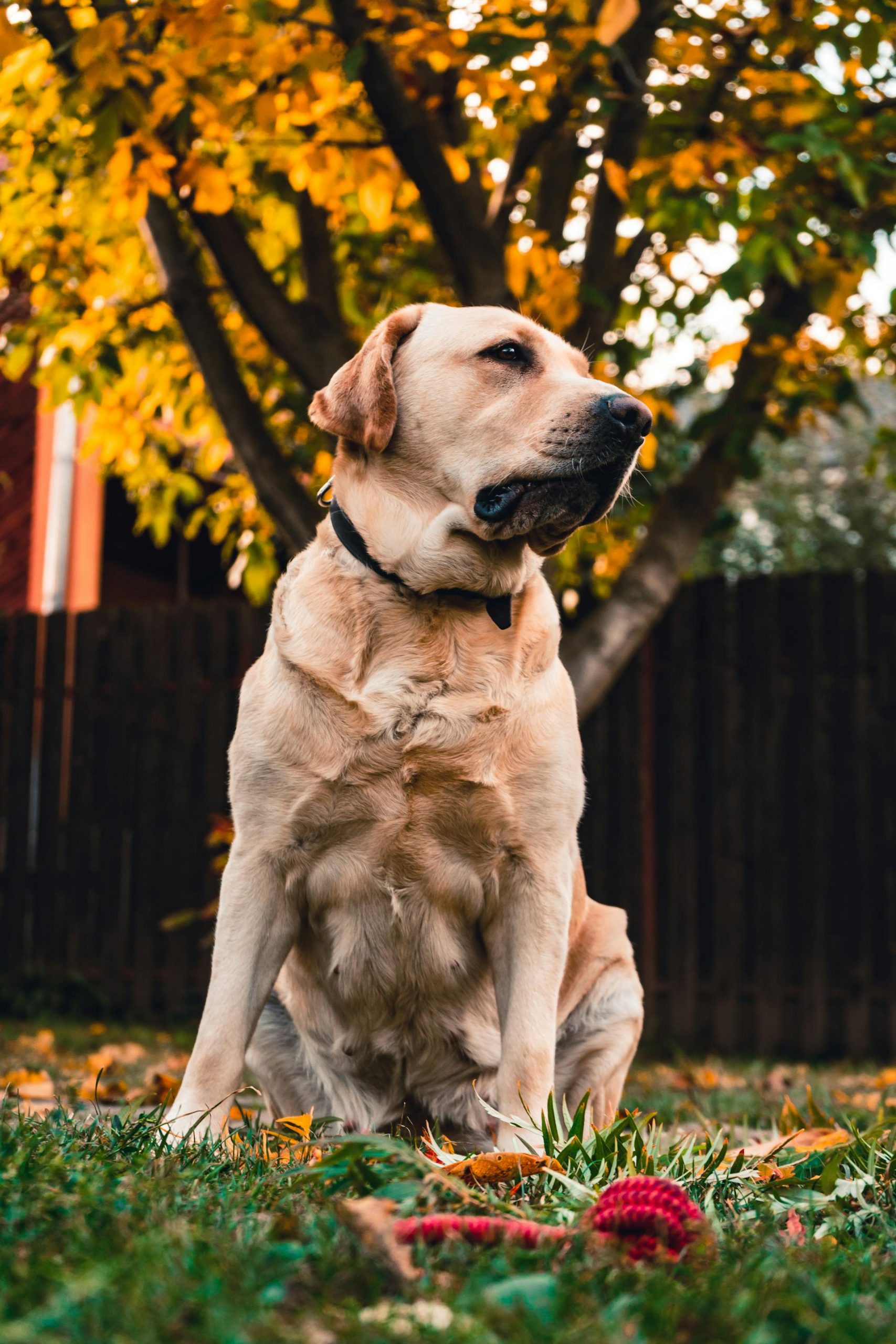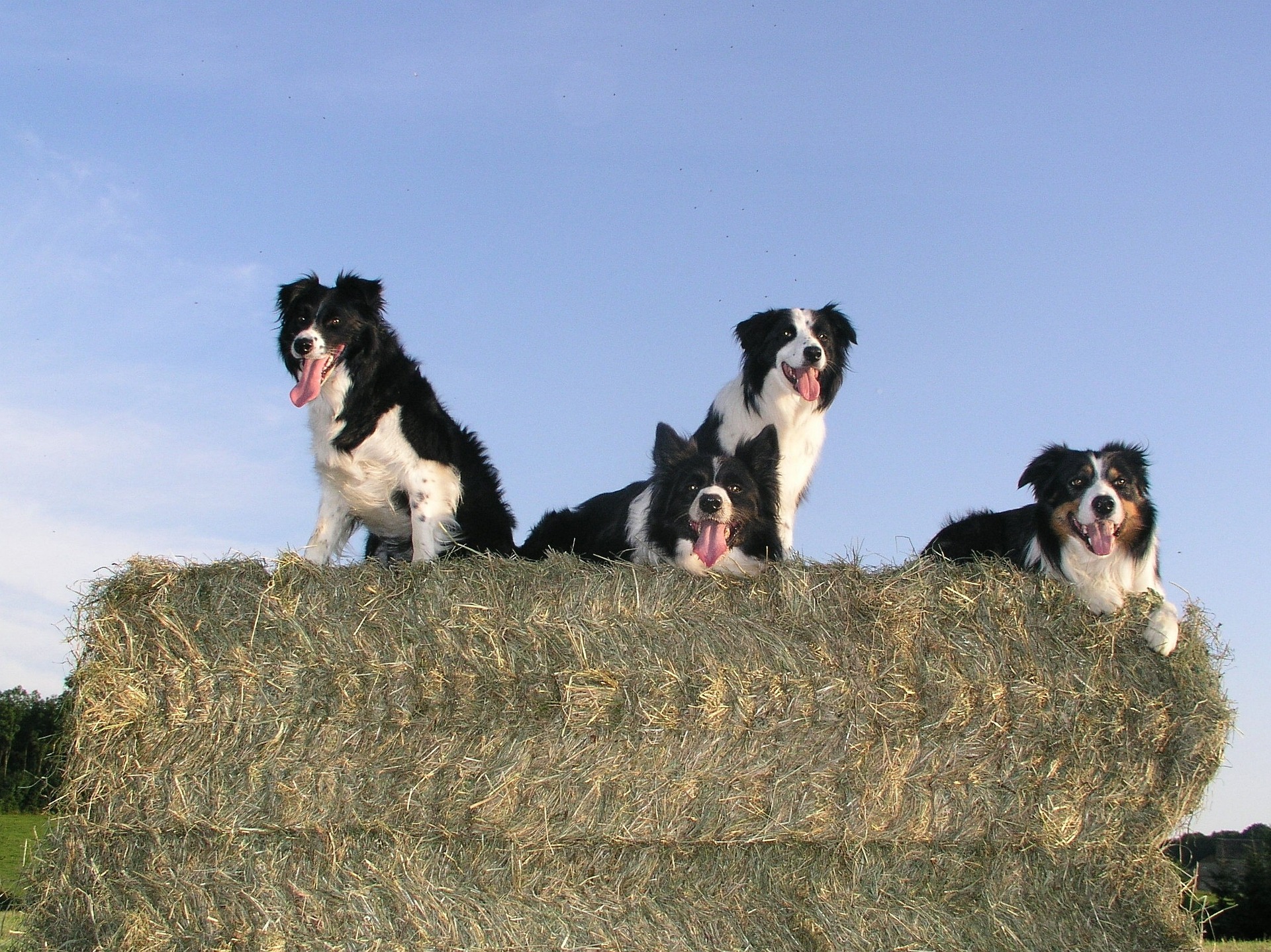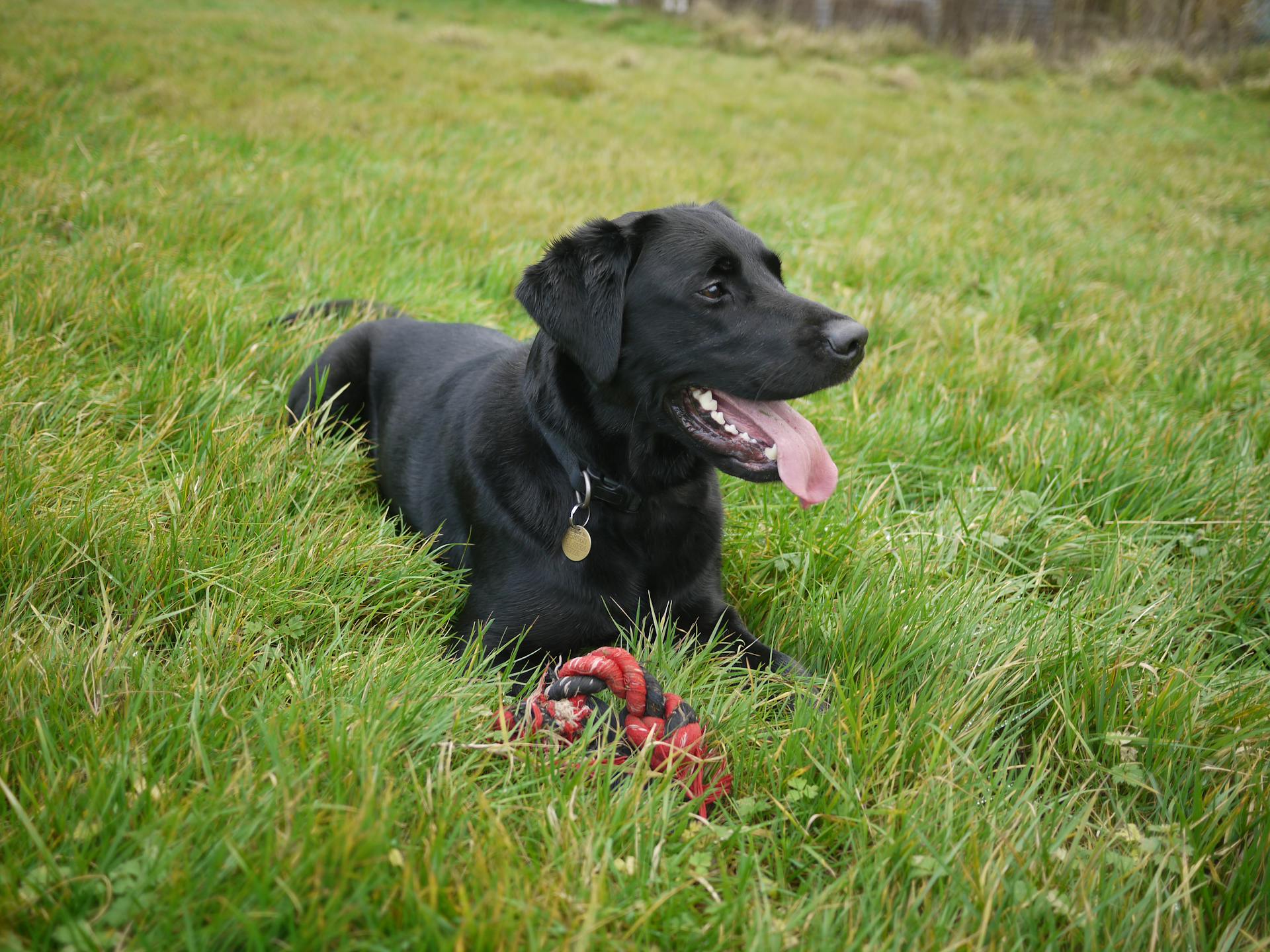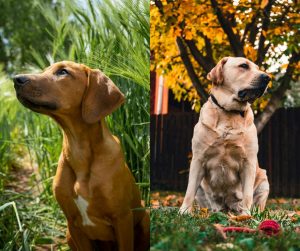Ever wonder if the playful pup next door is a Labrador Retriever or a Border Collie? As a dog owner with a passion for different breeds, I’m often asked about the key distinctions between these popular choices. Beyond their friendly faces lie different personalities and needs that make them a perfect match for very different lifestyles.
Think of this for a second. You are at the dog park and you see the ball-obsessed Lab kept bringing his slobbery toy back to a very confused Collie? Those were definitely a Labrador Retriever and a Border Collie in action! While both are amazing dogs, understanding their differences is key to finding the perfect furry friend.
As a long-time dog owner, I can tell you firsthand they are quite different. One wants to cuddle, the other wants a job! Let’s dive into the Labrador Retriever vs Border Collie dog breed comparison.
When considering adding a canine companion to their lives, people often weigh the attributes of different dog breeds to find a good match for their lifestyle.
The Labrador Retriever and the Border Collie are two such breeds that capture hearts with their friendly nature and intelligence. Each has its own unique history; the Labrador Retriever hails from Newfoundland, where it was a fishermen’s helper, while the Border Collie’s roots are in the borderlands between Scotland and England, where it was developed to herd livestock.
Labrador Retrievers are known for their amiable disposition and love of companionship, qualities that have consistently made them one of the most popular dog breeds in the United States.
They have a sturdy build, a dense coat that comes in shades of chocolate, black, and yellow, and an average lifespan of around 11 years.
The Border Collie, on the other hand, is recognized for its remarkable intelligence and energy, attributes that make it a standout performer in dog sports and agility.
Slightly smaller than the Labrador, the Border Collie often features a distinctive, thick coat that can come in various colors and patterns, and typically enjoys a lifespan of around 13 years.
Choosing between a Labrador Retriever and a Border Collie depends on several factors that potential dog owners should consider carefully.
It’s essential to recognize that while Labradors often thrive on human interaction and are excellent family pets, Border Collies might require more mental stimulation and a job to do due to their herding heritage.
The decision to bring either breed into one’s life should be made with a thorough understanding of what each dog can offer and the commitment required to meet their needs.
Key Takeaways
- Labrador Retrievers are friendly and sociable, while Border Collies are highly intelligent and active
- Labradors are large, robust dogs suited to family life, whereas Border Collies need more mental and physical stimulation
- The right breed choice depends on an individual’s lifestyle and ability to meet the dog’s care and exercise requirements
Breed Origins and History
When considering the Labrador Retriever and the Border Collie, one delves into a history steeped in purposeful breeding for specific tasks. These two breeds have compelling origins, with the Labrador Retriever hailing from Canada and the Border Collie from the British Isles.
Labrador Retriever Origins
The Labrador Retriever dog breed‘s roots take one back to the icy waters of Newfoundland, Canada. Initially known as the St. John’s water dog, this breed was bred by fishermen to help haul nets and retrieve fish.
Recognized for their strong swimming ability, these dogs were later crossed with Setters, Spaniels, and other Retrievers, leading to the affable Labs we know today. They became exceedingly popular in the 19th century among English gentry, who refined the breed further for hunting purposes.
Nowadays, some people make a difference between an American Lab and English Lab. But they are essentially the same, with one lineage retaining a bit more of the working genetics.
Border Collie Origins
On the other hand, the Border Collie originated in the borderlands between Scotland and England, boasting a heritage as an adept herding animal. The breed’s extraordinary intelligence and agility made them perfect for the hilly and demanding landscapes of their homeland.
They rose to prominence as sheepherding dogs, a role they are still lauded for. It was in 1995 that their unique blend of attributes garnered them full recognition by the American Kennel Club, securing their place in the canine aristocracy of breeds.
Physical Attributes
When choosing between a Labrador Retriever vs Border Collie dog breed, understanding their physical characteristics is essential. They differ in size, coat, and even color variations, which may influence your decision based on your lifestyle and preference.
Labrador Retriever Appearance
Labrador Retrievers present a strong-built, sturdy appearance, well-suited to their origins as working retrievers. They stand at a height of about 21.5 to 24.5 inches at the shoulder and weigh between 55 to 80 pounds, displaying a broad build with a dense, hard coat.
Labs have a distinctive coat that comes in three main colors: black, yellow, and chocolate. They are known for their double coat, which is water-repellent, providing them with an advantage in wet conditions. Sometimes, people might mistake the Lab for a Golden Retriever. But they are separate breeds.
Border Collie Appearance
In contrast, Border Collies are more slender and athletic-looking, reflecting their herding heritage. They are often lighter, typically weighing between 30 to 45 pounds, and slightly shorter with a height of up to 22 inches.
The coat of a Border Collie can be either smooth or rough and comes in a variety of colors and patterns, including black, blue merle, red, white, lilac, red merle, and sable. While they may not have the double coat of a Labrador, their coat is still dense and requires regular grooming to manage shedding.
Personality and Temperament
Choosing between a Labrador Retriever and a Border Collie means understanding their unique personalities and temperaments. These breeds bring different levels of energy, affection, and intelligence to a family’s dynamics. As I said before, just go to any dog park and you easily see the temperament differences between these two. You can easily see a Lab going through people and trying to get some pets and treats. Border Collies, on the other hand, are waiting for a command to go to work!
Labrador Retriever Temperament
Labrador Retrievers are renowned for their friendly demeanor and outgoing personality. They blend an infectious enthusiasm for play with a calm loyalty that makes them excellent family pets.
Often described as affectionate and good-natured, Labs are eager to please which makes them highly trainable. They are generally good with children and other animals, embodying a sociable and protective nature without being aggressive.
They need regular exercise to channel their high energy levels and maintain a balanced temperament.
- Energy Level: High; requires daily exercise and playtime
- Training: Enjoys learning and responds well to positive reinforcement
Border Collie Temperament
Border Collies, on the other hand, are a bundle of intelligence and energy. Recognized as one of the most intelligent dog breeds, they excel in mental stimulation and physical activity.
This breed is very sensitive and can be loyal to a fault, forming strong bonds with their owners.
However, their intense energy levels demand a constructive outlet—preferably a job or regular dog training sessions.
They can become restless or develop unwanted behaviors if their exercise and mental engagement needs are not met.
- Energy Level: Very high; requires extensive exercise and mental challenges
- Training: Quick learners but can be willful, requiring consistent and varied training approaches
Health and Lifespan
When considering a furry companion, understanding their health and lifespan is crucial for a happy journey together. They want to provide the best care, so knowing what health concerns may arise and how long they can expect their pet to be by their side is an essential piece of the puzzle.
Labrador Health Concerns
Labradors are generally robust dogs, yet they can face specific health challenges.
They are particularly prone to hip dysplasia and elbow dysplasia, two conditions that affect the joints and can cause mobility issues.
Additionally, progressive retinal atrophy is a genetic concern that can lead to blindness, and obesity is common in the breed if not managed through diet and exercise.
Labrador’s average lifespan ranges from 10 to 12 years.
- Common Health Concerns in Labradors:
- Hip Dysplasia
- Elbow Dysplasia
- Progressive Retinal Atrophy
- Obesity
Border Collie Health Concerns
Border Collies, renowned for their agility and intelligence, also have their share of inherited health conditions to watch for. However, they tend to live longer with a life expectancy of 12 to 15 years.
Collie Eye Anomaly and epilepsy are notable concerns within the breed, alongside issues like cataracts which can impair vision.
They also have a history with hip dysplasia although it’s not as common as in Labradors.
- Common Health Concerns in Border Collies:
- Collie Eye Anomaly
- Epilepsy
- Cataracts
- Hip Dysplasia
Training and Mental Stimulation
When it comes to dog training and keeping a dog mentally stimulated, it’s important to tailor the approach to their specific breed traits.
Labrador Retrievers and Border Collies both flourish when their training is consistent with their energy levels and intelligence.
Training Labradors
Labrador Retrievers bring a mixture of enthusiasm and a keen desire to please, which makes training them a rewarding experience.
They usually respond well to positive reinforcement methods like treats and praise. To address their high energy level, incorporating play into their training sessions helps keep them engaged.
Basic Commands: Labradors pick up on commands such as sit, stay, and come, quite readily, which makes the foundation of obedience training relatively smooth.
Agility Training: Due to their athleticism, agility training can also be a fun way to provide both physical exercise and mental stimulation.
Training Border Collies
Border Collies have a high trainability factor and are recognized for their exceptional intelligence.
They are often seen excelling in obedience competitions and are eager to learn new tasks.
Advanced Commands and Tasks: They can handle complex commands and enjoy challenging tasks, which are crucial for providing the mental stimulation they crave.
Agility and Herding: Border Collies thrive in activities that simulate their natural herding instincts, like agility courses or herding exercises, which utilize their high energy and concentration levels.
Living Conditions
Choosing between a Labrador Retriever and a Border Collie dog breed entails understanding their different needs at home. They both make excellent family pets, but they do have unique requirements when it comes to space and the family’s lifestyle.
Labrador in Home Environments
Labrador Retrievers are adaptable and can thrive in various living conditions, including apartments, as long as they receive enough exercise. They are known for their love of families and are typically excellent with children, often earning the title of a quintessential family dog.
Labrador Retrievers need interaction and prefer not to be left alone for long periods. They are social creatures that generally get along well with other pets.
- Space Requirements: Sufficient for moderate activity, secure yard preferred
- Compatibility with Children: High, tolerant and gentle playmates
- Compatibility with Other Pets: Good, with proper introductions and socialization
- Activity Level: They need daily exercise like walks or playtime
Border Collie in Home Environments
Border Collies require more space due to their high energy levels and intelligence which can lead to mischief if not sufficiently stimulated. Homes with yards are ideal for this breed.
They are excellent family pets and work well in homes with older children who can engage with them in active play. As with most breeds, socialization is key to helping them interact positively with other pets.
Border Collies are not as suited to apartment living unless their exercise needs can be met.
- Space Requirements: A large space for vigorous activity, a yard is highly beneficial
- Compatibility with Children: High, with a preference for families that engage in their play
- Compatibility with Other Pets: Generally good, but early socialization is essential
- Activity Level: High, requires more frequent and intensive exercise sessions
Care Requirements
When bringing a Labrador Retriever puppy or Border Collie puppy into the family, understanding their unique grooming needs is key. Both breeds have distinct coat characteristics and exercise requirements that potential pet owners should be aware of to maintain their health and happiness.
Grooming Labradors
Labrador Retrievers are equipped with a short, dense coat that is fairly low maintenance. Regular brushing, especially during seasonal shedding periods, helps to keep their shedding under control and their coat healthy.
It is generally recommended to brush a Labrador’s coat once a week, but during heavy shedding seasons, like spring and fall, increasing to several times a week can be beneficial.
For Labradors, grooming isn’t just about managing their shedding. Keep in mind their coat type and potential for allergies when selecting grooming products.
A simple, hypoallergenic shampoo can prevent skin irritation and keep their coat glossy.
Grooming Border Collies
Border Collies, known for their agility, possess a denser double coat that requires more frequent grooming. They typically need brushing at least twice a week to manage shedding and prevent matting.
During the times of the year when they shed more, you might find that more frequent brushing is necessary to keep on top of it.
Their longer coat can pick up debris and dirt, so Border Collies may need the occasional bath to keep them clean.
It’s important to use a shampoo suitable for their coat type that won’t strip away natural oils.
Offering a Border Collie enough physical and mental stimulation is crucial, as a bored Collie can become a mischievous one, sometimes even scratching or gnawing at their own coat.
Role in Human Lives
Labrador Retriever dogs and Border Collie dogs play distinctive and vital roles in human lives, often going beyond companionship. Both breeds are known for their loyalty and ability to serve as working dogs, and they have earned their popularity by serving in various supportive roles within human societies.
Labradors in Work and Therapy
Labrador Retrievers, with their friendly nature and gentle disposition, are widely recognized for their work in therapy. As therapy dogs, they bring comfort and joy to hospitals, schools, and nursing homes.
Thanks to their innate patience and affectionate behavior, Labradors excel in this role. Their popularity as a choice for therapy work is well deserved.
They’re also among the top breeds recognized by the American Kennel Club for their intelligence and amiable characteristics.
Working side by side with law enforcement and rescue teams, Labradors are also admired as working dogs.
They contribute significantly to various tasks like searching for missing persons, detecting substances, and providing aid during disaster relief efforts.
Border Collies in Herding and Service
Border Collies, renowned for their unmatched herding abilities, have a long history of working with livestock. With sharp instincts and an eagerness to please, they skillfully manage herds, a testament to their loyalty and work ethic.
This breed embodies the essence of a working dog.
Moreover, Border Collies are increasingly serving as service dogs. They utilize their intelligence and agile nature to assist individuals with disabilities, offering independence and support.
Having a Border Collie service dog by one’s side can be transformative, empowering individuals to navigate their daily lives with confidence.
Choosing the Right Breed for You
As I said before, there is a huge difference between these two dog breeds. When deciding between a Labrador Retriever vs Border Collie, as prospective dog owners, you consider how a dog’s traits align with your own lifestyle and daily routine. Hopefully, after reading through the article and seeing how they compare head-to-head, you can make a better decision.
Lifestyle Considerations with Labradors
Labrador Retrievers thrive in a family environment. They are famously loyal and affectionate, eager to please, and bond closely with their humans.
As a dog breed with roots in hunting, Labs possess a natural love for the outdoors and activities like swimming.
They require regular exercise to maintain their health and happiness, making them a great match for active individuals or families who enjoy long walks or games of fetch.
Labradors generally get along well with children and other pets, making them ideal candidates for a harmonious family pet.
Exercise: Daily, energetic. Family Pet: Excellent, child-friendly. Price: Can vary, generally affordable to high.
Lifestyle Considerations with Border Collies
Border Collie dogs are a herding breed, known for their impressive intelligence and high energy levels.
This translates into a need for significant mental and physical exercise to prevent boredom.
They are well-suited to active individuals or families who can provide a structured environment with plenty of opportunity for brain games and activities like agility.
Border Collies tend to be loyal and affectionate, often forming a strong bond with one person in particular.
While they can make great family pets, their herding instincts might not always mix well with small children or pets without proper training and socialization.
Exercise: High intensity, extensive. Family Pet: Good, requires training. Herding Breed: Yes, strong instincts.
And hey, if you cannot decide on either of these two, I hear there are breeders out there trying to mix them. The Lab Border mix is called Borador puppy. That is also an option, right?


